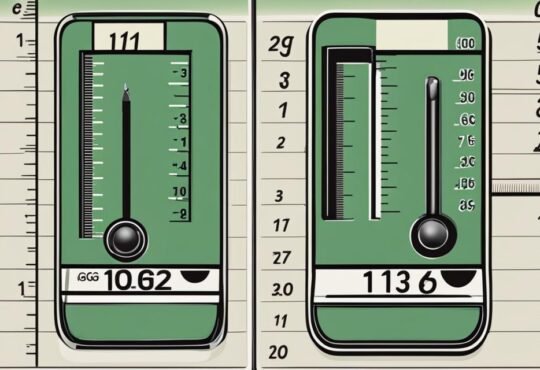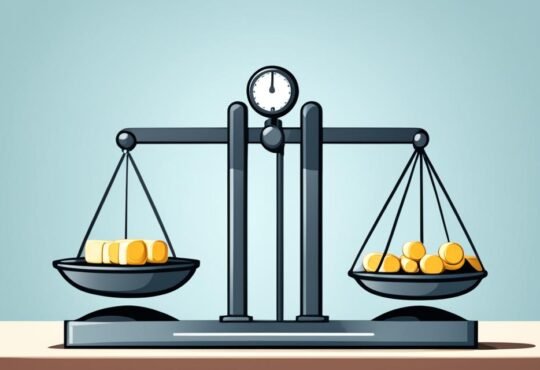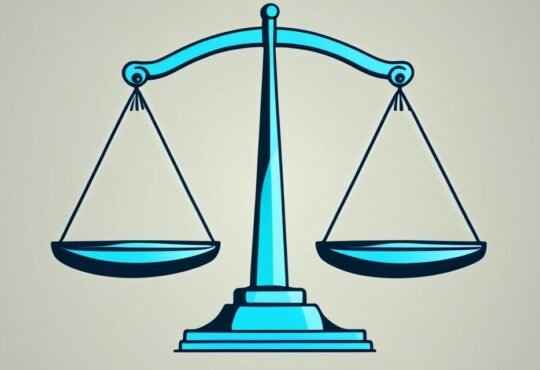
Convert 115g to kg – Quick & Easy Weight Conversion
Converting grams to kilograms is a simple process that allows you to easily convert weights from smaller units to larger units. In this case, you want to convert 115g to kg. By using a conversion calculator or a g to kg converter, you can quickly determine that 115g is equal to 0.115kg. This conversion is useful when working with measurements in recipes, in scientific experiments, or for everyday weight conversions. When referring to a kilogram conversion chart, you can see that 115g falls under the category of grams and is equivalent to a fraction of a kilogram.
Contents
- 1 Choosing the Right Kitchen Scale for Accurate Measurement
- 2 Converting Measurements for Different Ingredients
- 3 Common Ingredient Conversion Charts
- 4 Measurement Abbreviations and Oven Temperature Conversion
- 5 Conclusion
- 6 FAQ
- 6.1 How do I convert 115g to kg?
- 6.2 Is there a conversion calculator or converter I can use to convert grams to kilograms?
- 6.3 Why is it important to choose the right kitchen scale for accurate measurements?
- 6.4 What are the different measurement methods used for ingredients?
- 6.5 Are there ingredient conversion charts available for common baking ingredients?
- 6.6 What are the commonly used measurement abbreviations in recipes?
- 6.7 How do I convert oven temperatures from degrees Celsius to Fahrenheit?
Key Takeaways:
- Converting grams to kilograms is a simple process using a conversion calculator or a g to kg converter.
- 115g is equal to 0.115kg.
- This conversion is useful for recipes, scientific experiments, and everyday weight conversions.
- Consult a kilogram conversion chart to understand the relationship between grams and kilograms.
- Understanding weight conversions can help you in various areas of life.
Choosing the Right Kitchen Scale for Accurate Measurement
When it comes to accurate weight measurement in baking, choosing the right kitchen scale is crucial. A digital scale is recommended as it provides precise measurements in grams, which can easily be converted to kilograms. Look for a scale that offers both grams and ounces conversion, allowing you to switch between the two units seamlessly. It’s also helpful to have a tare function, which allows you to reset the scale to zero after placing a bowl or container on it, making it convenient for weighing multiple ingredients in the same container.
Consider popular models such as the My Weigh KD8000 Multi-Purpose Digital Kitchen & Hobby Scale or the Etekcity kitchen scale for accurate and reliable measurements.
Key Features to Consider
- Precision: Ensure that the scale provides accurate measurements with high precision.
- Capacity: Choose a scale with a capacity suitable for your needs, whether it’s for home baking or professional use.
- Multiple Units: Look for a scale that offers both grams and ounces conversion for versatile use.
- Tare Function: The tare function allows you to deduct the weight of the container, making it easier to measure ingredients.
- Easy to Clean: Opt for a scale that is easy to clean and maintain.
- Compact Design: Consider the size and design of the scale to ensure it fits well in your kitchen.
Whether you’re a seasoned baker or just starting out, having a reliable kitchen scale is essential for accurate measurements. It can make a significant difference in the outcome of your baked goods, ensuring consistent results every time.
Comparison Table: Top Kitchen Scales
| Scale | Precision | Capacity | Units | Tare Function | Price |
|---|---|---|---|---|---|
| My Weigh KD8000 | 0.1g | 8000g | Grams, ounces | Yes | $49.99 |
| Etekcity Kitchen Scale | 1g | 5000g | Grams, ounces | Yes | $19.99 |
Converting Measurements for Different Ingredients
When it comes to baking or cooking, accurate measurements are essential to ensure the success of your recipe. However, it’s important to note that measurements for different ingredients can vary depending on the method used to measure them. Understanding the different measuring methods and their applications will help you achieve consistent results in your culinary endeavors.
One commonly used measuring method for dry ingredients is the scoop-and-sweep method. In this method, a spoon is used to fluff up the ingredient, such as flour or cocoa powder, in its container. Then, the measuring cup is dipped into the ingredient and filled to the brim. Finally, the excess is leveled off with a knife or straight edge, resulting in a precise measurement. This method works well for ingredients that can be easily leveled off, such as granulated sugar or cornstarch.
However, some recipes may call for the spoon-and-sweep method, especially for ingredients that are prone to compacting, such as brown sugar or confectioners’ sugar. In this method, the ingredient is lightly spooned into the measuring cup until it’s slightly overflowing. Then, the excess is leveled off with a knife, providing a consistent measurement. This method helps ensure that the ingredient is not packed too tightly, which can affect the texture and outcome of your recipe.
For liquids, volume measurements such as cups or milliliters are commonly used. However, in cases where volume measurements may not be accurate or practical, weight equivalents in ounces and grams are provided for greater precision. Weight measurements are particularly useful when working with ingredients like butter or chocolate, which can vary in density and affect the final outcome of your baked goods.
| Ingredient | Scoop-and-Sweep Method | Spoon-and-Sweep Method | Weight Equivalents |
|---|---|---|---|
| Flour | Fill the measuring cup with a spoon, then level off with a knife | Spoon the flour into the measuring cup, then level off with a knife | 1 cup = 120g |
| Cocoa Powder | Fill the measuring cup with a spoon, then level off with a knife | Spoon the cocoa powder into the measuring cup, then level off with a knife | 1 cup = 85g |
| Butter | – | – | 1 cup = 227g |
| Sugar | Fill the measuring cup with a spoon, then level off with a knife | Spoon the sugar into the measuring cup, then level off with a knife | 1 cup = 200g |
When measuring ingredients, it’s important to consult the specific recipe or conversion chart to ensure accurate measurements. Different recipes may have different guidelines and preferences for specific ingredients, so following the instructions is crucial to achieve the desired results. Whether using volume or weight measurements, taking care with your measurements will lead to more consistent and successful culinary creations.
Common Ingredient Conversion Charts
Baking and cooking often require precise ingredient measurements, and having access to common ingredient conversion charts can be incredibly helpful. These charts provide weight equivalents for various ingredients, allowing you to convert measurements from cups to grams or ounces. Some common ingredients with conversion charts include:
- Flour
- Granulated sugar
- Brown sugar
- Cocoa powder
- Cornstarch
- Confectioners’ sugar
- Baking powder
- Butter
- Milk
- Oil
- Salt
- Rolled oats
By referring to these charts, you can ensure accurate measurements and achieve the desired results in your recipes. Whether you’re converting from cups to grams or ounces, these conversion charts are valuable references that help you maintain consistency in your cooking and baking endeavors. Whether you’re measuring flour for a fluffy cake or butter for rich cookies, having reliable conversion charts at your fingertips will make your cooking experience more efficient and enjoyable.
| Ingredient | Volume Measurements | Grams | Ounces |
|---|---|---|---|
| Flour | 1 cup | 120g | 4.2oz |
| Granulated sugar | 1 cup | 200g | 7oz |
| Brown sugar | 1 cup | 220g | 7.8oz |
| Cocoa powder | 1 cup | 100g | 3.5oz |
| Cornstarch | 1 cup | 130g | 4.6oz |
| Confectioners’ sugar | 1 cup | 120g | 4.2oz |
| Baking powder | 1 teaspoon | 4g | 0.14oz |
| Butter | 1 cup | 227g | 8oz |
| Milk | 1 cup | 240g | 8.5oz |
| Oil | 1 cup | 224g | 7.9oz |
| Salt | 1 teaspoon | 5g | 0.18oz |
| Rolled oats | 1 cup | 80g | 2.8oz |
Refer to this table for easy and accurate conversions between volume measurements, grams, and ounces for each ingredient mentioned. With these conversion charts, you can confidently measure ingredients and produce delicious results in your culinary creations.
Measurement Abbreviations and Oven Temperature Conversion
Understanding measurement abbreviations is essential for following recipes effectively. Here are some common abbreviations:
- tbsp: tablespoon
- tsp: teaspoon
- oz: ounce
- fl. oz: fluid ounce
- c: cup
- qt: quart
- pt: pint
- gal: gallon
- lb: pound
- mL: milliliter
- g: gram
- kg: kilogram
- l: liter
In addition to measurement abbreviations, it’s important to be able to convert oven temperatures between degrees Celsius and Fahrenheit. Here are some temperature conversions:
- 250°F is equivalent to 120°C
- 350°F is equivalent to 180°C
- … and so on
Consult a conversion chart or use an online converter for accurate temperature conversions. This knowledge will help you achieve the perfect cooking and baking results by understanding the correct oven temperature.
Conclusion
In conclusion, converting weights from grams to kilograms is a simple process that can be easily accomplished with the help of a conversion calculator or a g to kg converter. When it comes to accurate measurements, selecting the right kitchen scale is crucial, particularly for baking. By understanding different measurement methods and utilizing ingredient conversion charts, you can achieve precise measurements in your recipes. Additionally, familiarizing yourself with measurement abbreviations and temperature conversions will prove valuable in your culinary endeavors.
By following these tips and taking advantage of the available resources, you can confidently convert measurements and ensure successful outcomes in your cooking and baking. Whether you’re experimenting with new recipes or following old favorites, accurate measurements are key to achieving delicious results. So, remember to choose the appropriate tools, be mindful of different measurement methods, and consult conversion charts when necessary. With practice, you’ll become more adept at converting weights and measurements, elevating your culinary skills to the next level.
So, go ahead and embrace the world of measurements and conversions. Take the guesswork out of your recipes and create culinary masterpieces with confidence. Happy cooking!
FAQ
How do I convert 115g to kg?
To convert 115g to kg, you simply divide the amount in grams by 1000. Therefore, 115g is equal to 0.115kg.
Is there a conversion calculator or converter I can use to convert grams to kilograms?
Yes, you can use a conversion calculator or a g to kg converter to quickly determine the equivalent value. Simply input the amount in grams, and the calculator or converter will provide you with the corresponding value in kilograms.
Why is it important to choose the right kitchen scale for accurate measurements?
Choosing the right kitchen scale is crucial for accurate measurements in baking and cooking. A digital scale is recommended as it provides precise measurements in grams, which can easily be converted to kilograms. Look for a scale that offers both grams and ounces conversion and has a tare function for convenient weighing of multiple ingredients in the same container.
What are the different measurement methods used for ingredients?
Two common measurement methods for ingredients are the scoop-and-sweep method and the spoon-and-sweep method. In the scoop-and-sweep method, a spoon is used to fluff up the ingredient, then the measuring cup is dipped into it, and the excess is leveled off. The spoon-and-sweep method is used for ingredients like cocoa powder, confectioners’ sugar, cornstarch, nut flours, matcha, baking powder, and spices.
Are there ingredient conversion charts available for common baking ingredients?
Yes, there are ingredient conversion charts available for various baking ingredients. These charts provide weight equivalents, allowing you to convert measurements from cups to grams or ounces. Some common ingredients with conversion charts include flour, granulated sugar, brown sugar, cocoa powder, cornstarch, confectioners’ sugar, baking powder, butter, milk, oil, salt, and rolled oats.
What are the commonly used measurement abbreviations in recipes?
Common measurement abbreviations in recipes include tbsp for tablespoon, tsp for teaspoon, oz for ounce, fl. oz for fluid ounce, c for cup, qt for quart, pt for pint, gal for gallon, lb for pound, mL for milliliter, g for gram, kg for kilogram, and l for liter.
How do I convert oven temperatures from degrees Celsius to Fahrenheit?
To convert oven temperatures from degrees Celsius to Fahrenheit, you can use a conversion chart or an online converter. For example, 250°F is equivalent to 120°C, and 350°F is equivalent to 180°C. These conversions are important for proper baking and cooking.







